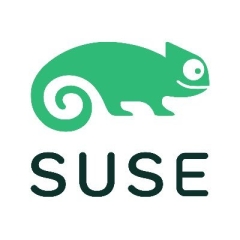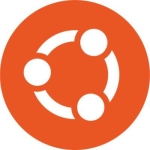What is our primary use case?
We normally use SUSE for application servers.
What is most valuable?
The ease of use is quite exceptional in SUSE Linux. Whenever you need to set up any application role on that particular distribution, you normally just use the inbuilt package manager or installer called YaST, which is basically the management toolkit for the server. Compared to other distributions, maybe where you need first to go ahead and install the package and probably do a bit of configuration, it's normally easier to do this in SUSE since the package is already installed and all you have to do is just do your configurations for that particular feature you need.
Part of the advantages of using SUSE Linux is that it comes with support. So you do get it for free. However, if you need support, that is when you need to pay a subscription cost. Still, patches, you can get for free.
It's easy to set up.
The solution is stable.
It can scale.
Support is very responsive.
What needs improvement?
The turnaround time needs improvement. Whenever we have a new project or whenever we have a new solution we're deploying, using SUSE is quite easy to configure. This allows us to get up and running within a few minutes. However, the turnaround time of deployment could be faster.
SUSE is also portable, so you can run it on any virtualized platform, including containers.
The portability of the solutions is also key and needs improvement. For example, you might have a hardware failure, and you need to run all the backup of the same server and run it on another host.
Compliance also needs improvement, especially around security due to patching.
My main issue with Linux distributions is majorly around clustering. They should probably just make clustering a bit simpler and also provide more descriptive log files for cluster services.
For how long have I used the solution?
I've been working with the solution for around a year now.
What do I think about the stability of the solution?
I'd rate the stability eight out of ten. There are no bugs or glitches, and it doesn't crash or freeze.
What do I think about the scalability of the solution?
The scalability is great, and I would rate it eight out it ten. It does support the same or almost the same tooling as Red Hat. For example, OpenShirt and containerization.
We have about 500 users on the solution right now. We expand on an as-needed basis.
How are customer service and support?
Technical support is actually superb in the sense that whenever you raise a support mechanism, their support is within 30 minutes to two or three hours.
How would you rate customer service and support?
How was the initial setup?
The solution is very simple to set up. It is not overly complex or difficult. I'd rate it nine out of ten in terms of ease of deployment.
What we did is we came up with a template of what we wanted our image to look like. For example, simple things such as a date and time setting, the region setting on the OS itself, patching, having the latest patches, and user management. We came up with a template of what we like to call a golden image that was already installed with everything that we usually use on a day-to-day basis on our server. We took that golden image, and we deployed it on every other little application that we needed to install.
This means that we do not have to repeat similar processes, for example, user management, installing the latest patches, configuration, et cetera - basic OS-level configurations.
Our strategy is basically to have a golden image with all the settings that we think are necessary and that apply to all of the systems that are running across our environment, and then we use that golden image to continuously deploy new systems when need be.
The full deployment itself takes less than 20 minutes. Normally it's done by one system admin.
There is no maintenance needed per se. Maybe this is patching and a monthly OS checkup. That's it.
What about the implementation team?
The entire deployment was done in-house. We did not need help from outside integrators or consultants.
What was our ROI?
In terms of time and money-saving metrics, I'd rate OI nine out of ten.
What's my experience with pricing, setup cost, and licensing?
In terms of cost, they are cheaper than Red Hat. I'd rate the affordability of pricing six out of ten.
For SUSE Linux, currently, we normally use the free versions that come with both patching and support for patching. We normally pay for support whenever we need to, so they'll charge us for every hour after the engineer has connected.
What other advice do I have?
We're customers.
We have an on-premises and cloud deployment.
I'd rate the solution nine out of ten.
It's a superb choice, especially when you are running anything, let's say web services or operating system-level services. It's easy to set up and quite stable.
Which deployment model are you using for this solution?
Hybrid Cloud
Disclosure: My company does not have a business relationship with this vendor other than being a customer.
















